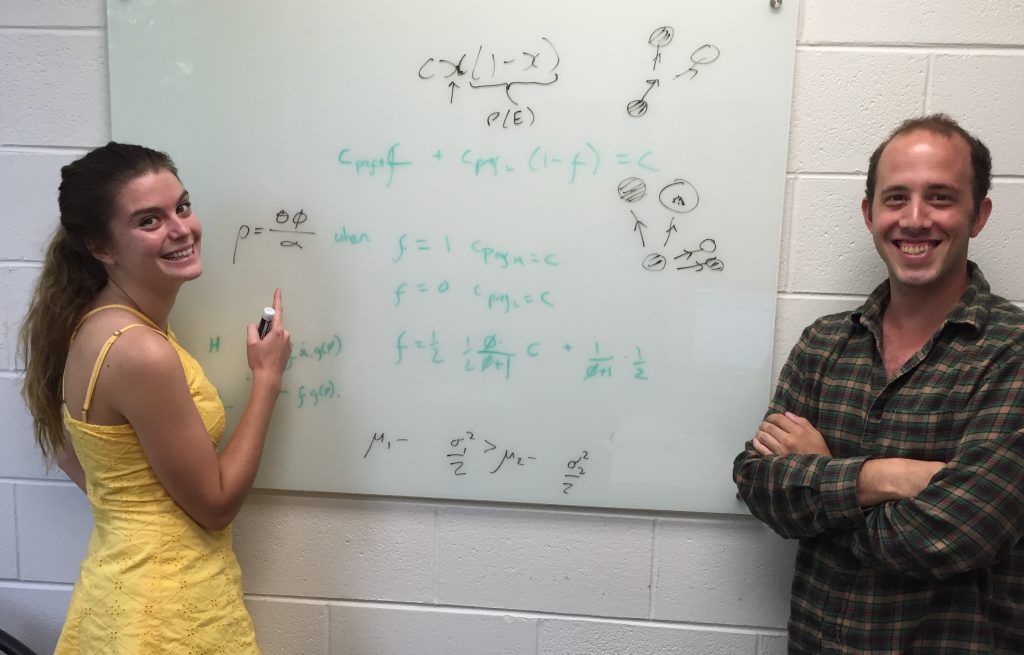Human activities such as farming, refuse disposal and backyard bird feeding provide reliable sources of food for wildlife, which in turn can create conditions conducive to local parasite transmission. A new paper, just published in The American Naturalist, uses mathematical models to understand how food provisioning influences dispersal of wildlife hosts and their pathogens across the landscape. In general, more food-provisioned patches means more infected sub-populations; however, if provisioned patches produce fewer dispersers (e.g. if easy access to food promotes site fidelity), widespread provisioning across the landscape can reduce infection spread. This work, led by former UGA PhD student Dan Becker, resulted from Celine Snedden’s summer research project in the Population Biology of Infectious Diseases REU, and was co-authored by Richard Hall and Sonia Altizer.
